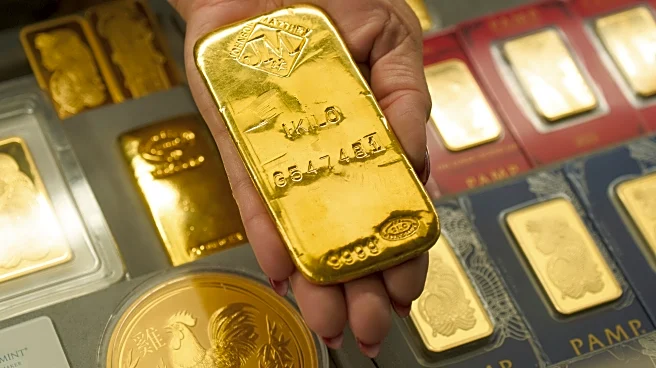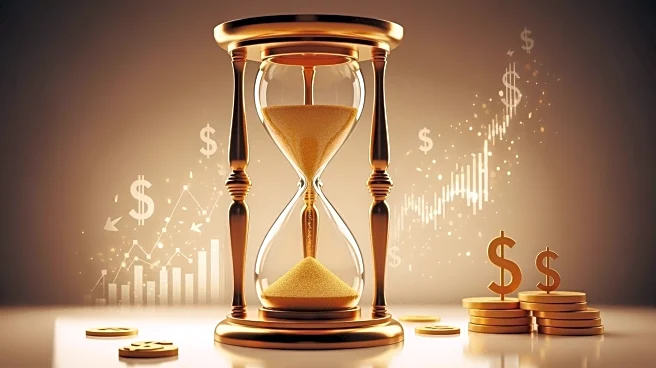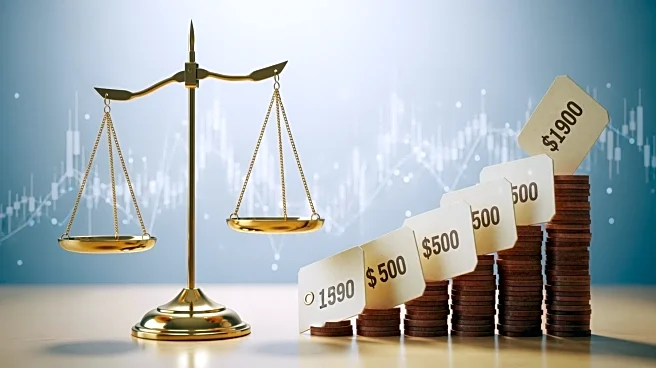What's Happening?
Gold prices surged to an all-time high above $4,300 per ounce in October 2025, driven by economic uncertainty and safe-haven demand. The metal's price briefly touched $4,378 before settling around $4,210.
Factors contributing to this rally include expectations of U.S. interest rate cuts, persistent inflation, and geopolitical tensions. The Federal Reserve is anticipated to cut rates, further supporting gold's appeal as a non-yielding asset.
Why It's Important?
Gold's rise reflects broader economic concerns, including U.S.-China trade tensions and a government shutdown. As a traditional safe-haven asset, gold's performance indicates investor anxiety about economic stability. The metal's rally outpaces major stock indices and cryptocurrencies, highlighting its role as a hedge against uncertainty. The potential for further price increases could impact investment strategies and market dynamics.
What's Next?
Market analysts are divided on gold's future trajectory. Some predict continued gains, with prices potentially reaching $5,000 per ounce, while others foresee a correction. The Federal Reserve's upcoming decisions on interest rates and geopolitical developments will be key factors influencing gold's price. Investors will closely monitor these events to adjust their strategies accordingly.
Beyond the Headlines
Gold's performance underscores its enduring appeal as a store of value. The metal's rise amid economic turmoil highlights its role in diversified investment portfolios. Central banks' increased gold purchases and ETF inflows suggest sustained demand. However, potential corrections could test investor confidence in the short term.













